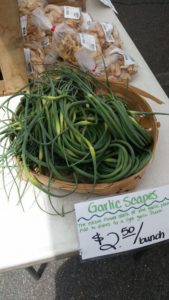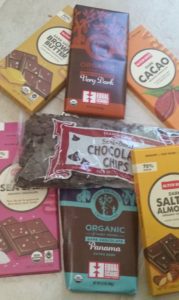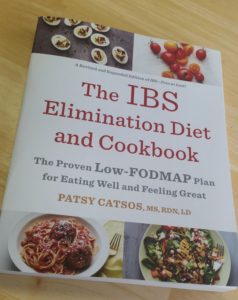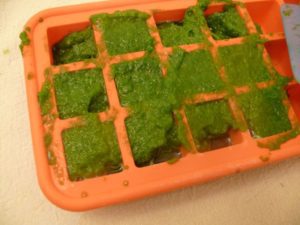 Heard about low FODMAP and wondering if it makes sense for you? A low FODMAP diet is a specific elimination diet designed to help with tummy troubles–gas, bloating, pain, diarrhea and constipation. There’s a growing amount of research supporting it for people with tummy troubles of all sorts, especially IBS or IBD (Crohn’s, Ulcerative Colitis) and SIBO (Small Intestinal Bacterial Overgrowth). Reducing these FODMAPs help about 75% of people with IBS problems. Obviously, this is a big deal for many people who experience ongoing gastrointestinal distress.
Heard about low FODMAP and wondering if it makes sense for you? A low FODMAP diet is a specific elimination diet designed to help with tummy troubles–gas, bloating, pain, diarrhea and constipation. There’s a growing amount of research supporting it for people with tummy troubles of all sorts, especially IBS or IBD (Crohn’s, Ulcerative Colitis) and SIBO (Small Intestinal Bacterial Overgrowth). Reducing these FODMAPs help about 75% of people with IBS problems. Obviously, this is a big deal for many people who experience ongoing gastrointestinal distress.
What is a FODMAP, anyhow? FODMAP is an acronym for classes of carbohydrates that are poorly digested, which is why they can cause obnoxious symptoms. But for most people, the problem isn’t ALL classes of FODMAPs, just some.
So if you do suspect you may have a FODMAP problem, the general protocol is first an elimination diet, which is generally 2-4 weeks, then followed by a structured re-introduction to ID the problematic foods. I’d strongly suggest finding a nutrition professional to pair with. It makes the process a lot easier and simpler, because most of the info online gets outdated quickly as newer testing info is available. For example, Monash just retested bananas and found that ripe (browning) ones are much higher in FODMAPs than the yellow ones.
The goal isn’t to just eliminate FODMAPs and then go forth and be low FODMAP. The goal is to reintroduce as many foods as possible to eat as varied and as balanced (and yummy) diet as possible without discomfort.
I just put together a BIG list of low FODMAP friendly foods packaged foods that are suitable for the elimination phase. It’s not every food out there, of course, but the most common products that clients ask about.
However, low FODMAP isn’t a healthier diet, or an ideal diet for long-term health, it’s a diet for management of digestive symptoms. I have posted on it a few times for my gluten-free newsletter because so many people with Celiac and gluten sensitivity do have ongoing digestive distress–and low FODMAP was initially designed at Monash University for people with Celiac who were gluten-free and didn’t feel better. But to be clear, if you don’t have digestive problems, this diet isn’t a good choice for you—it excludes a lot of tasty foods that provide great nutrients!
Cookbook review:
While we’re on the topic of FODMAPs, I wanted to give a big thumb’s up to Patsy Catsos‘ new book, The IBS Elimination Diet and Cookbook. It has the most up-to-date lists of low FODMAP foods, and a great explanation of both the elimination and reintroduction. Of course, there are wonderful recipes, too. In fact, I’m so tempted to make the Raspberry Lime Ice Pops tonight, which look perfect for the warmer weather.
Kitchen tip:
If you’ve learned that garlic and onions are not friendly to your tummy, this is your time of year! It’s pretty easy to find garlic scapes at the Farmers’ Market (as you can see above), and also  spring onions with the greens on them. The green shoots seem to be FODMAP friendly, the same way that chives and scallion greens are. You can get a bunch, puree the greens (not the white part!) and freeze them in an ice cube tray. Then, when you need a little of that flavor, pop a cube in whatever you’re making.
spring onions with the greens on them. The green shoots seem to be FODMAP friendly, the same way that chives and scallion greens are. You can get a bunch, puree the greens (not the white part!) and freeze them in an ice cube tray. Then, when you need a little of that flavor, pop a cube in whatever you’re making.
News:
- Fascinated by digestive diseases & the microbiome, and/or SIBO research? I know I am! There’s a live science Reddit this Friday (tomorrow) June 9th at 1pm EST with many of the leading researchers.
- Love meal prep services? Gluten-free & More Magazine just posted a list of the ones that have gluten-free options.
- Recent studies have indicated that the rate of Celiac disease is climbing in teens. This article explores the data and discusses potential causes & implications.
- Exercise is exercise is good for digestive disorders, like IBS or IBD–but too much can be harmful, too. A new study showed that 2 hours of strenuous exercise led to more digestive distress, especially in hot weather. So don’t overdo it. https://goo.gl/f267gD
- For those of you who have SIBO, a new paper is out on best practices of testing standards for North America. This will hopefully make life simpler for patients.
Have a great summer!
Cheryl Harris, MPH, RD is a Registered Dietitian Nutritionist and Certified Wellcoach in Fairfax & Alexandria, VA. She helps people with a range of dietary issues, including Celiac Disease, digestive distress, food allergies, vegetarian and vegan diets, preventing diseases and “whole foods” eating. Let’s get you on your way to achieving your goals and feeling great! Email or call 571-271-8742.
